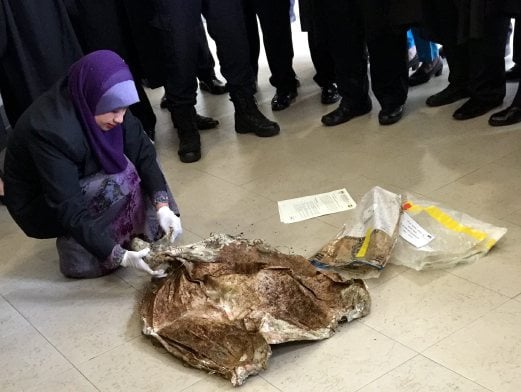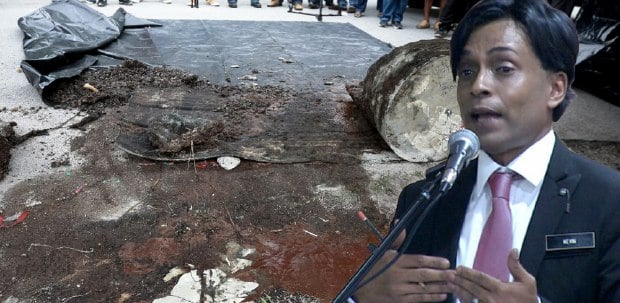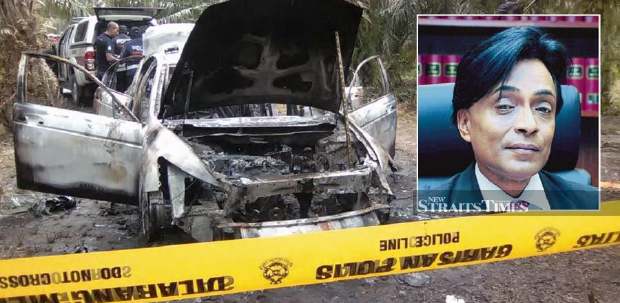KUALA LUMPUR: Deputy public prosecutor Datuk Anthony Kevin Morais was smothered to death before being stuffed in a gunny sack and sealed with cement inside a drum, the High Court heard.
On day-four of the DPP's murder trial, pathology expert Dr Nurliza Abdullah testified that the cause of Morais' death was probable asphyxiation caused by compression.
Nurliza, 51, from the Kuala Lumpur Hospital forensics department told the court that there were trauma marks all over the deceased's body which were caused by compression and being hit with blunt object.
"There were trauma marks or hematoma on his upper lips, shoulders, back, chest and ankle. However, there were no defensive wounds on the body," she said.
She also told the court that there was a high probability that Morais was already dead before he was placed inside an oil drum which was found in a swampy area in Subang.
She supported her opinion on her findings by saying that there were no signs of struggle on the body adding that when it was discovered, it was in an abnormal position.
"When the gunny sack was uncovered there was a body which was fully dressed but without shoes.
"The body was in a foetal-like posture in which the knees and the hip joint were bent and the arms were tied behind the back with a neck tie.
"There were no signs of a struggle, looking at the posture the body was discovered," Nurliza said.
During examination by DPP Wan Shaharuddin Wan Ladin on how hematoma (a solid swelling of clotted blood within the tissues) could affect a human body, she said that the reaction could only take place if the person was alive.
"It is the law of biology that the reaction can only happen if there is an impact or injury on a living person," she said not dismissing that Morais was beaten up before he died.
When asked whether it was possible if the victim had caused the injuries himself, Nurliza answered that through her findings, none of the injuries were self-inflicted.
The court was also told that there were signs of congestion on Morais' body in which the victim faced suffocation.
"If congestion occurs, there will be a discolouration on the face. In this case, the colour of the victim's face was darker than the body.
"This is a sign of asphyxiation in which pooling of blood in the blood vessels causes obstruction of oxygen leading to death," the witness said.
She also dismissed the fact that Morais' death was due to drowning as based on her findings, there was no liquid or foreign objects found in the respiratory tract of the victim.
To a question by Wan Shaharuddin, the witness said usually a post-mortem is conducted by only one medical officer but she was told that the case involved a senior officer as it was of public interest.
"On Sept 16, 2015 at 3.05pm, I was on duty with another doctor, Dr Hafizam and we received a body which was labelled 'unknown', which was later identified as Anthony Kevin Morais and our duty was to conduct a post-mortem and find out the cause of death," she said testifying as the 11th prosecution witness.
On Jan 27, six men G. Gunasekaran, 43, R. Dinishwaran, 23, A. Thinesh Kumar, 22, M. Vishwanath, 25, S. Nimalan, 22, and S. Ravichandaran, 34, claimed trial to murdering 55-year-old Kevin Morais.
They were alleged to have committed the offence between 7am and 8pm on Sept 4, 2015, while the victim was on his way from Jalan Dutamas Raya Sentul to No. 1 Jalan USJ1/6D, Subang Jaya.
On the same day, Kunaseegaran also claimed trial to abetting the six at the same time and place.
On Sept 16, 2015, Morais' body was found in a drum filled with cement in Subang Jaya, Selangor after one of the seven suspects brought police to the location at Taman Perumahan USJ 1, Persiaran Subang Mewah.






